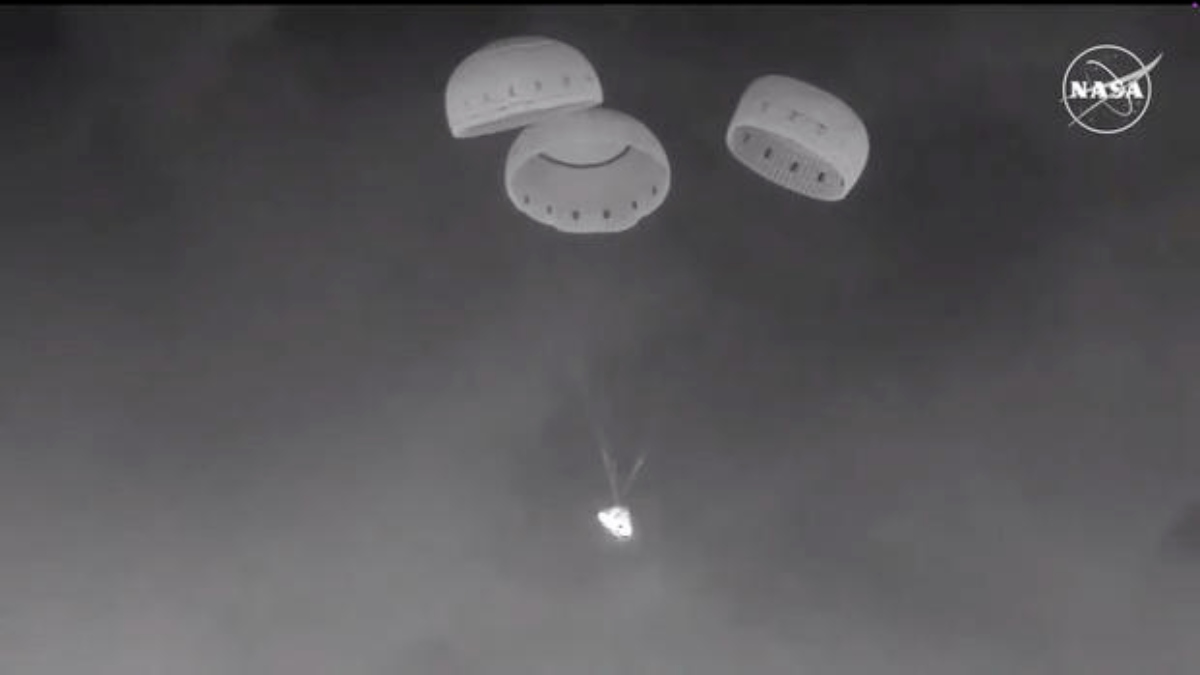Leaving its crew behind at the International Space Station Boeing’s troubled Starliner has finally landed on Earth, putting an end to a disappointing test flight. The spacecraft made a touchdown in New Mexico at 12 am (local time) on Friday. Despite NASA’s concerns about thruster problems and multiple helium leaks, the beleaguered spacecraft had no problems undocking and moving away from the station at 6:04 pm (EDT).
The spacecraft then conducted a critical 59-second deorbit braking manoeuvre at 11:17 pm (local time) to drop out of the orbit. NASA shared the video of the uncrewed spacecraft landing at New Mexico’s White Sands Space Harbour.
The only spacecraft to launch with crew and land safely without it
With the Friday landing, Starliner became the first vehicle in spaceflight history to launch with a crew but return to Earth safely without the crew. The spacecraft slammed into the discernible atmosphere 400,000 feet above the Pacific Ocean. The Starliner manoeuvred across the Baja Peninsula and northern Mexico before descending to a parachute-and-airbag-assisted touchdown.
Teams from NASA and Boeing were stationed nearby to begin the “safing” operations and to carry out the post-landing inspections. It was an unpiloted six-hour flight for the Starliner. NASA now will shift its focus to crew members who are left behind.
Impact Shorts
More ShortsStarliner commander Barry “Butch” Wilmore and pilot Sunita Williams who went to space on the Boeing spacecraft, were ordered to remain at the space station after NASA managers decided their spacecraft could not be trusted to bring them safely back to Earth.
However, the spacecraft managed to land safely on Earth and the known helium leaks did not get worse. Even the reaction control system thrusters in the ship’s service module, the ones that had problems early in the mission, worked as required to safely move the spacecraft away from the station and to keep it stable during the de-orbit burn, CBS News reported.
What comes next?
The road ahead for the Starliner is not that clear. The service module was jettisoned as planned before re-entry burned up in the atmosphere. Hence, the engineers will not be able to determine exactly what caused the helium leaks, along with the degraded thruster performance during the ship’s rendezvous with the station.
Instead, the engineers will now deal with more data analysis, tests and potential redesigns. All these processes are expected to delay the next flight, with or without astronauts aboard to late next year at the earliest.
Prior to the landing, Boeing engineers and managers maintained that Starliner could have safely brought Wilmore and Williams back to Earth. However, NASA managers said that there was too much uncertainty to risk the lives of the astronauts.
Wilmore and Williams are now expected to remain aboard the space station until late February. They will now technically hitchride home aboard a SpaceX Crew Dragon spacecraft which is scheduled to launch on September 24 to ferry the next long-duration crew to the lab.
The Crew Dragon will fly to space with 2 astronauts instead of 4, making space for Wilmore and Williams. Crew 9 commander Nick Hague and Russian cosmonaut Alexander Gorbunov will embark on the space six-month space journey.
With inputs from agencies.
)